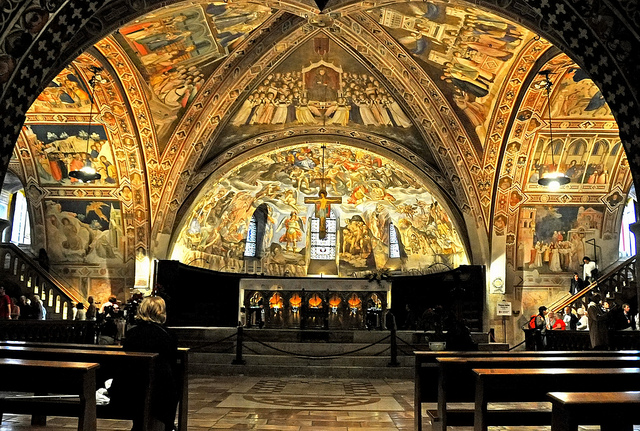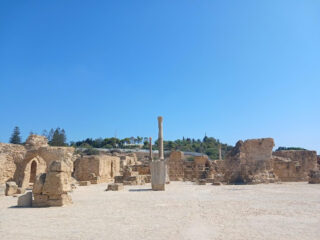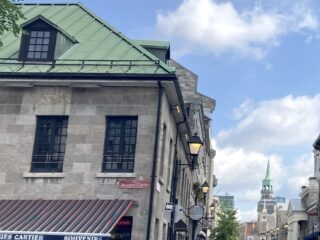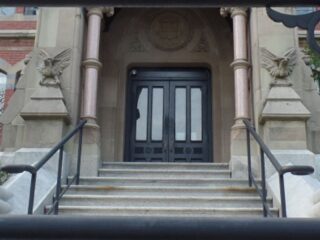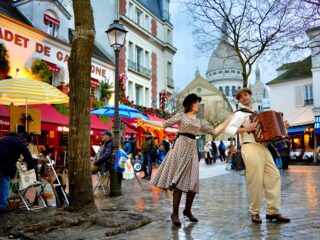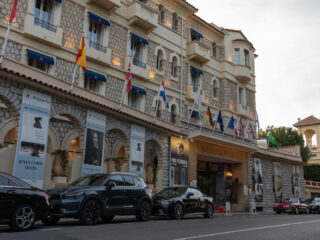By Joni Rendon
Never before-and possibly never since-has a Mediterranean island inspired as much enmity as did the Spanish isle of Majorca for prolific French writer and protofeminist George Sand during the inhospitable winter of 1838. Her ill-fated stay there, which later became the subject of her book Winter in Majorca, was to have deleterious and far-reaching consequences for both the novelist and her famous companion, composer Fredric Chopin.
Setting foot on Majorcan soil more than a century and a half later, my visit blessedly turns up not a shred of evidence regarding the unfriendly locals, terrible food, and inclement weather that so tormented Sand during her stay. In fact, to the contrary, I come away knowing that this is a place I’ll be returning to again and again.
Most pleasing of all was my discovery that the Majorcan winter, far from being the bleak, damp affair experienced by Sand, routinely brings daytime temperatures requiring nary a sweater, along with a seemingly omnipresent sun (indeed, the island claims an average of 300 days of sunshine annually). No doubt, this was the Majorca that Sands had sought when she and Chopin left France in search of a temperate retreat for her rheumatism-afflicted son.
Chopin, Sand and her two young children, the product of an unhappy marriage that had ended in divorce, departed in early November brimming with optimism. “Our journey,” wrote the author to her friend Carlotta Marliani, “seems to begin under the most favorable conditions.” Embarking from Barcelona on November 7th, 1838, for the overnight passage aboard the “El Mallorqn” ferry, they could not have imagined they’d be making the reverse trip under dire circumstances just 98 days later.
In fact, their initial encounter with the island and its sun-dappled port town of Palma was that of a paradise found, and the pair waxed poetic about their surroundings in letters to friends upon arrival:
“I’m in Palma, between Palm, cedar, aloe, orange, lemon, fig and pomegranate trees; the type of trees that will never grow in The Garden of Plants there in Paris. The sky is turquoise, the sea blue, the mountains emerald, and the air? The air is as blue as the sky. The sun shines all day and people are dressed as in the summer time, because here it is hot.” -From Chopin’s letter to Julio Fontana on November 15, 1838
“The nature, the trees, the sky, the sea, the monuments surpass all my dreams: this is the promised land!”- From Sand’s letter to Carlotta Marliani on November 14, 1838.
Local accommodations were scarce, and when they received word of a house for rent in the countryside 17 kilometers north of Palma, they leapt at it. Their first misfortune befell them soon after taking up residence in the remote 16th century town of Valldemossa, set high on the island amidst the green and ochre-hued landscapes of the Sierra Tramuntana mountains. The health of Chopin, already delicate from a chronic lung condition, began to decline and they found them themselves unceremoniously forced out of their rented house by their landlord, who was afraid of contagion.
Settling nearby into the vacant and semi-ruined Carthusian monastery that Sand had been renting as a writer’s studio, they found themselves enchanted by the setting’s poetic beauty and location on a densely wooded terrace offering views of the sea. Sand wrote enthusiastically, “We are planted between heaven and earth. The clouds cross our garden at their own will and pleasure, and the eagles clamor over our heads.” (from a letter to Alexis Duteil, January 20th, 1839)
Despite this, there was a downside to their rustic, if charming, accommodations. While the monastery’s thick stone walls provided a cool respite from the mid-day heat of Majorcan summers, they also conferred a bone-chilling dampness during winter, exacerbated by the building’s spartan furnishings and lack of proper heating. To make matters worse, a vengeful winter mistral had set in, bringing lashing gales of wind and endless rains made all the more ferocious by their high elevation. As Sand wrote soon after returning to France, “We lived in the middle of the clouds, and fifty days had passed without being able descend to the plain; the roads had become torrents, and we did not see the sun.” (from a letter to Francois Rollinat on March 8, 1839)
In addition to battling the natural elements, the couple also faced obstacles of a manmade kind as well. The famed composer and writer, who were at the social and artistic epicenter of the French Romanticist movement, now found themselves ostracized in their new surroundings by the island’s moralistic inhabitants. The couples’ unconventional, unmarried lifestyle, combined with their lack of attendance at church scandalized the locals, who often refused even to sell them necessary household goods.Sand’s social progressiveness and idiosyncrasies did nothing to further their cause. Having cast aside her given name of Amandine Aurore Lucie Dupin in favor of her masculine nom de plume, she was a chain-smoking divorcee as notorious for her romantic liaisons as for her gender-bending habit of frequently dressing in men’s clothing. Chopin’s sickness engendered no sympathy either, for the Spaniards equated lung disease on par with the plague and considered him “an object of dread and horror”. The open hostility and close-mindedness of the islanders left an extremely bitter impression on Sand, and in Winter in Majorca, she minces no words, describing them as “barbarians” and “monkeys”.
Majorca certainly did not prove to be the idyllic writer’s retreat that Sand had envisioned upon setting off from France. Instead, she found her energies largely expended on nursing the invalid composer, whose health was worsening by the day, while looking out for her two children and struggling with routine-and not so routine-household tasks, such as overseeing the transport of Chopin’s beloved Pleyel piano by donkey up to the monastery.
The piano itself had taken an interminable three months to arrive, including the fortnight it was held up by Majorcan customs, who wanted to charge an exorbitant 600 Franc import duty for its release. In the interim, Chopin had been forced to compose on a poor substitute, an ancient Spanish piano abandoned in the monastery. Despite an inferior instrument and his extremely poor health, he managed to complete work on his masterful twenty-four preludes comprising Op. 28, much of which reflected his melancholy mood of the time. In her memoir, Histoire de ma Vie, Sand poetically described the composition as being “full of the drops of rain which resounded on the sonorous tiles of the monastery, transformed in his imagination and his music into tears falling from heaven on his heart.
“Indeed, the endless rains continued to have a grave impact on Chopin’s physical and mental condition, rendering him housebound and prone to fits of terror in the dank monastery before forcing the couple’s hasty and premature return to Paris in late February to save his very life. Fortunately the composer survived, but his health, and his relationship with Sand, never fully recovered from the strains of their ill-fated Majorcan winter.
Although their stay was short-lived and plagued by the scandalous outrage of the locals, today much is made of the island’s connection to this famous twosome and the story of their time there has evolved into one celebrating their passionate love affair. Cartuja de Valldemossa, the centuries-old monastery that played such a pivotal role in the Majorcan chapter of their relationship, still stands and is now a museum open to the public.Wandering the landscaped gardens surrounding its perimeter, I try to imagine how different, if at all, the vista of orange, olive and cypress trees set against the rocky outcroppings of the surrounding mountains may have looked to Sands and Chopin upon their arrival. Drinking in the setting’s wild beauty and tranquility, I can sense the poetry of the landscape that initially enamored them with this remote corner of the island. The sand-colored monastery, set upon a gently sloping hilltop, rises majestically over the terraced jumble of narrow streets and honey-hued stone dwellings of the village. With the day’s bright sun refracting off its surface, the building appears warm and inviting, and I strain to envision it cloaked in the intractable rain and fog that created such an inhospitable environment in the winter of 1838.
Once inside its imposingly stark and solemn interior, such a scene becomes exponentially easier to imagine, as I involuntarily shiver at both the sudden drop in temperature and grand austerity of my surroundings. The soaring arched corridors of the monastery, which had once “delighted themselves of [Chopin’s] melodies” now only have the echoing footsteps of tourists with which to content themselves. In the eerie, meditative silence that prevails come the fanciful reverberations of screeching winds racing down the hall from the cloister accompanied by the syncopated rhythm of raindrops and the mournful strains of Chopin’s preludes.
In these inspired, larger than life surroundings, it’s easy to understand why Sand called the monastery “the most romantic abode in the world”. Lining its long corridor are various monks ‘cells’, the most famous being Nos. 2 and 4, which were the ones reputedly occupied by the author and composer. In a letter to his friend Julio Fontana dated December 28, 1838, Chopin seemed less enamored than Sand was with their surroundings, describing his cell as being “in the shape of a coffin, high, and full of dust on the vault.” Today these small, vaulted rooms house mementoes from their stay, including some of Sand’s manuscripts, Chopin’s notes, and the belated Pleyel piano that caused him so much grief to obtain.
Additional cells such as an old apothecary and book-lined priory contain interesting items pertaining to the monastery’s original occupants, the Carthusian monks who were ceded the property from the King of Aragon in 1399. Adjoining the monastery complex is a neoclassical church capped with an imposing green-tipped bell tower, additions which began in the 18th century on the site of the monastery’s original church dating from the 1400s.
To be sure, the drama and romance of living in a 500 year-old monastery would certainly prove intoxicating to anyone, let alone to a pair of such creative temperament like Sand and Chopin, who embodied the very ideals of European romanticism. Yet just as easily, one can understand how the monastery became a veritable prison for the pair, with Chopin finding it “full of terrors and phantoms, even when he was well.” (Histoire de ma Vie, 1855)
Sand’s enthusiasm was eventually overcome by a paralyzing sadness as winter advanced, and she wrote mournfully in Winter in Majorca, “Death seemed to hover over our heads to seize one of us, and we were alone in contending with him for his prey.” Indeed, the specter of death forced them to flee the monastery and the island itself in a state of desperation, “although Chopin had not the strength to drag himself along.” In their haste, they had no choice but to embark on the only steamboat leaving the island, where they found themselves in the unpleasant company of a hundred pigs being transported to Barcelona.Sand bitterly lamented, “There is no other way of leaving this cursed country.
“Her complex relationship with the island-one that left her repelled by its inhabitants while enarmored with its rugged physical beauty-mirrors the incongruities of Sand herself. As an aristocrat who openly defied society’s conventions, perhaps it’s only fitting that Majorca-a land of contrasts that pits sea against mountains, tranquil villages against bustling port towns-was for Sand the object of both affection and animosity.
Originally published in 2006


